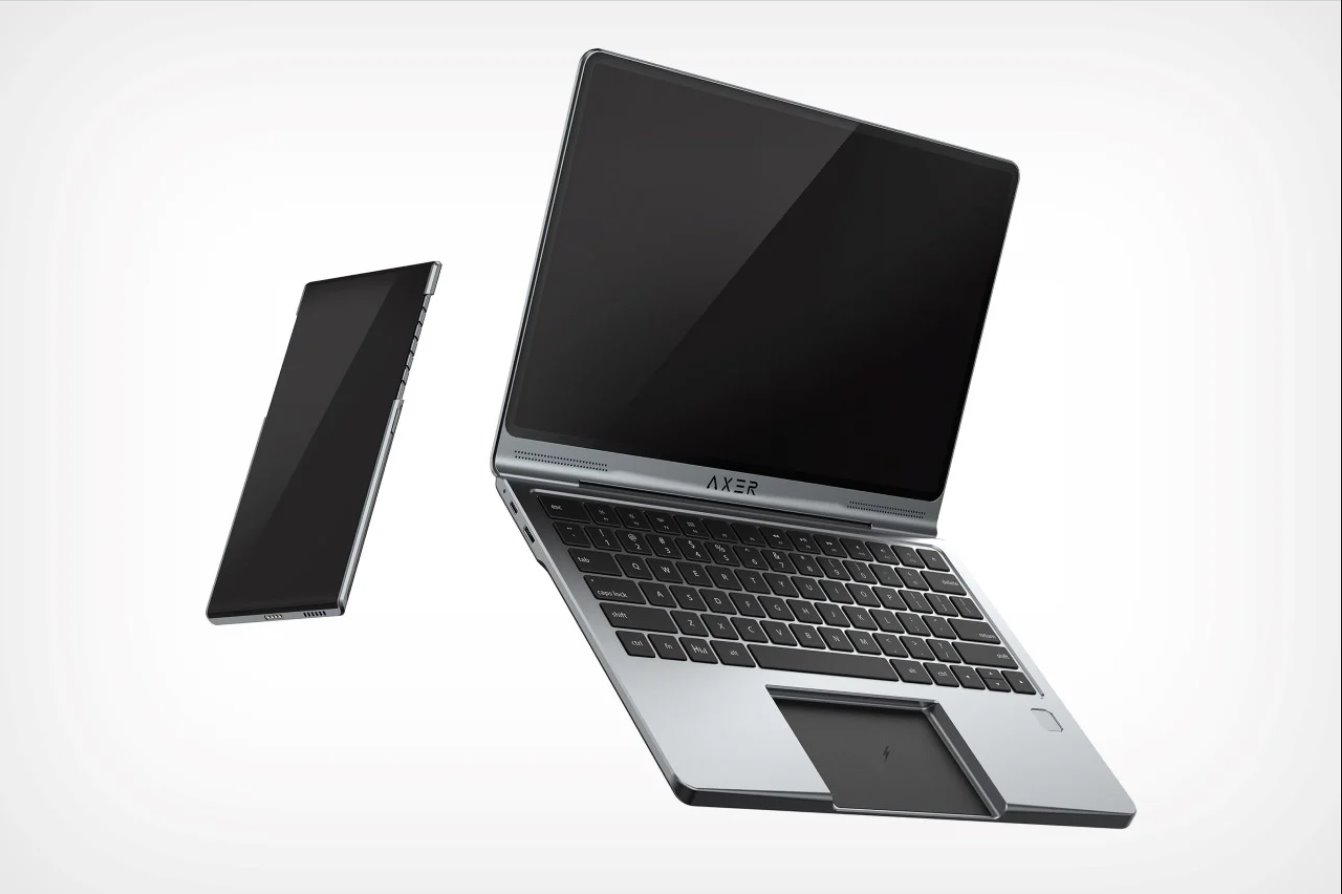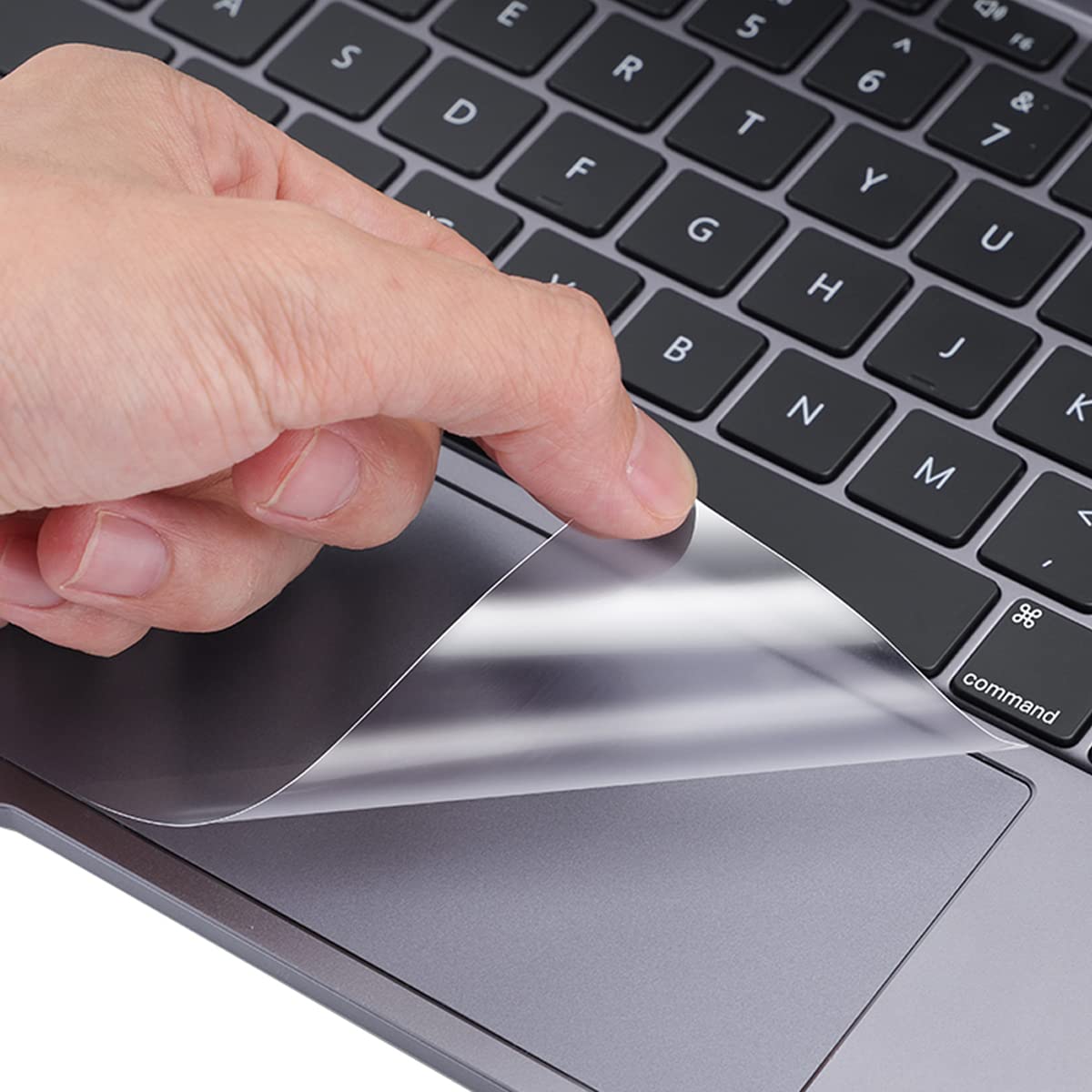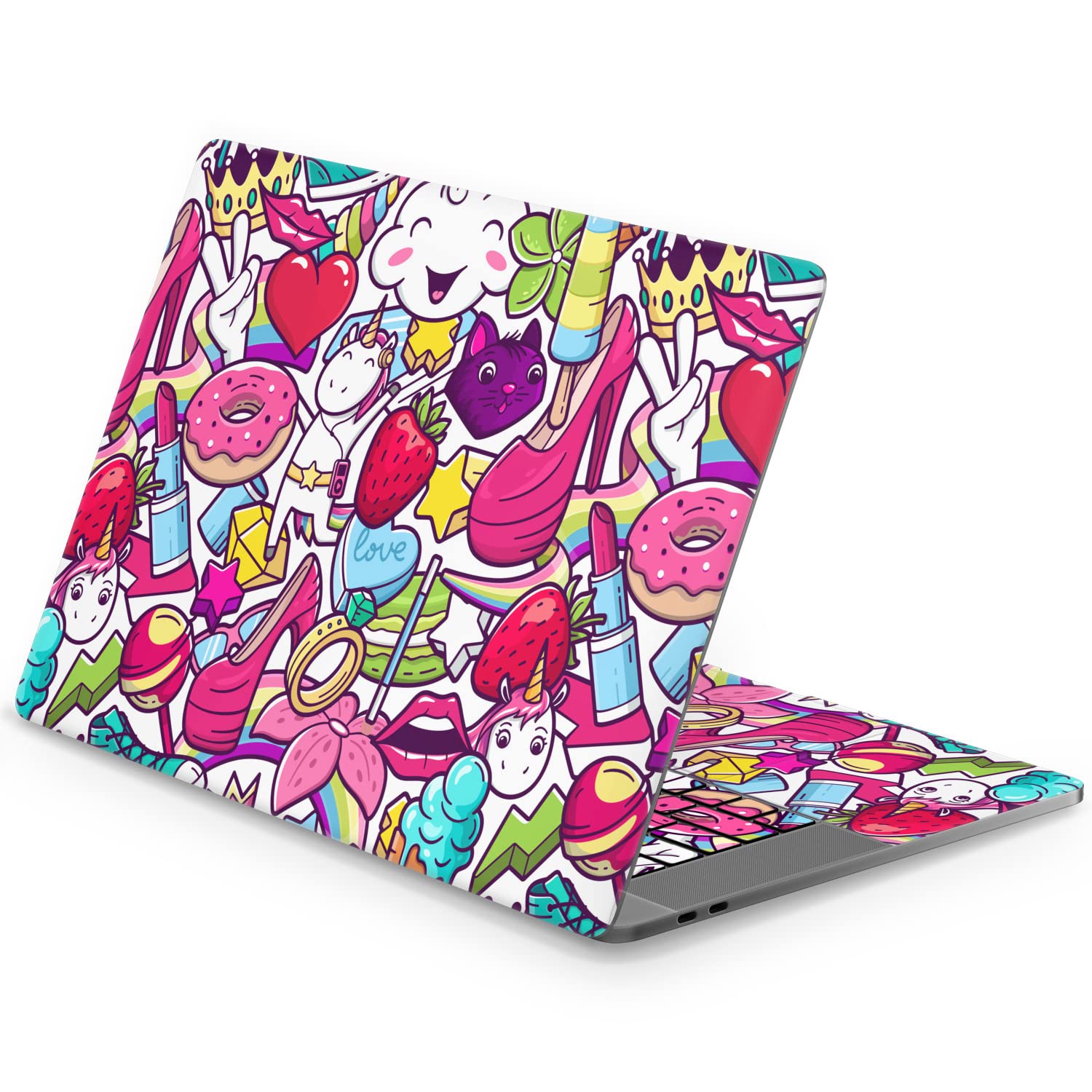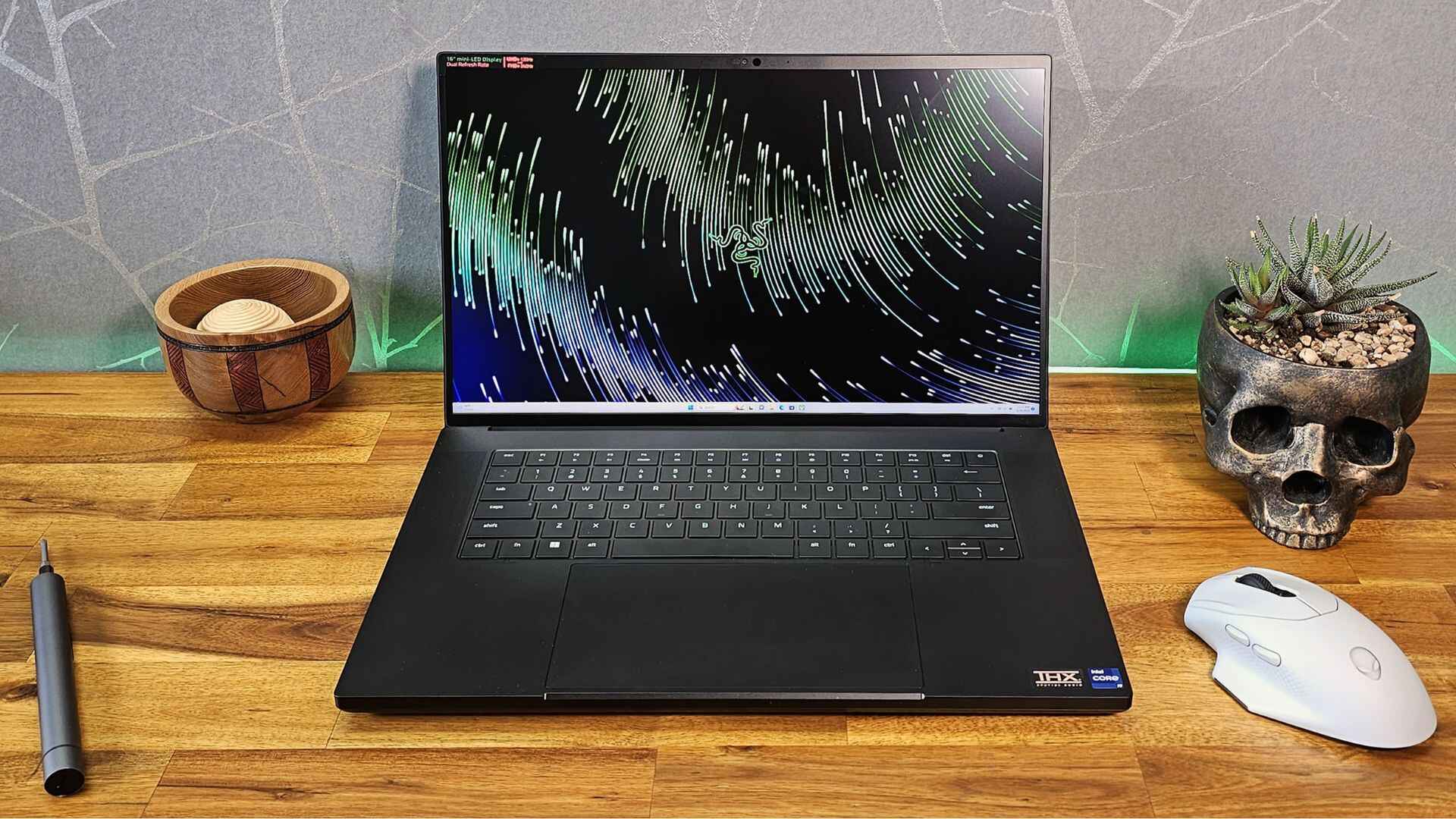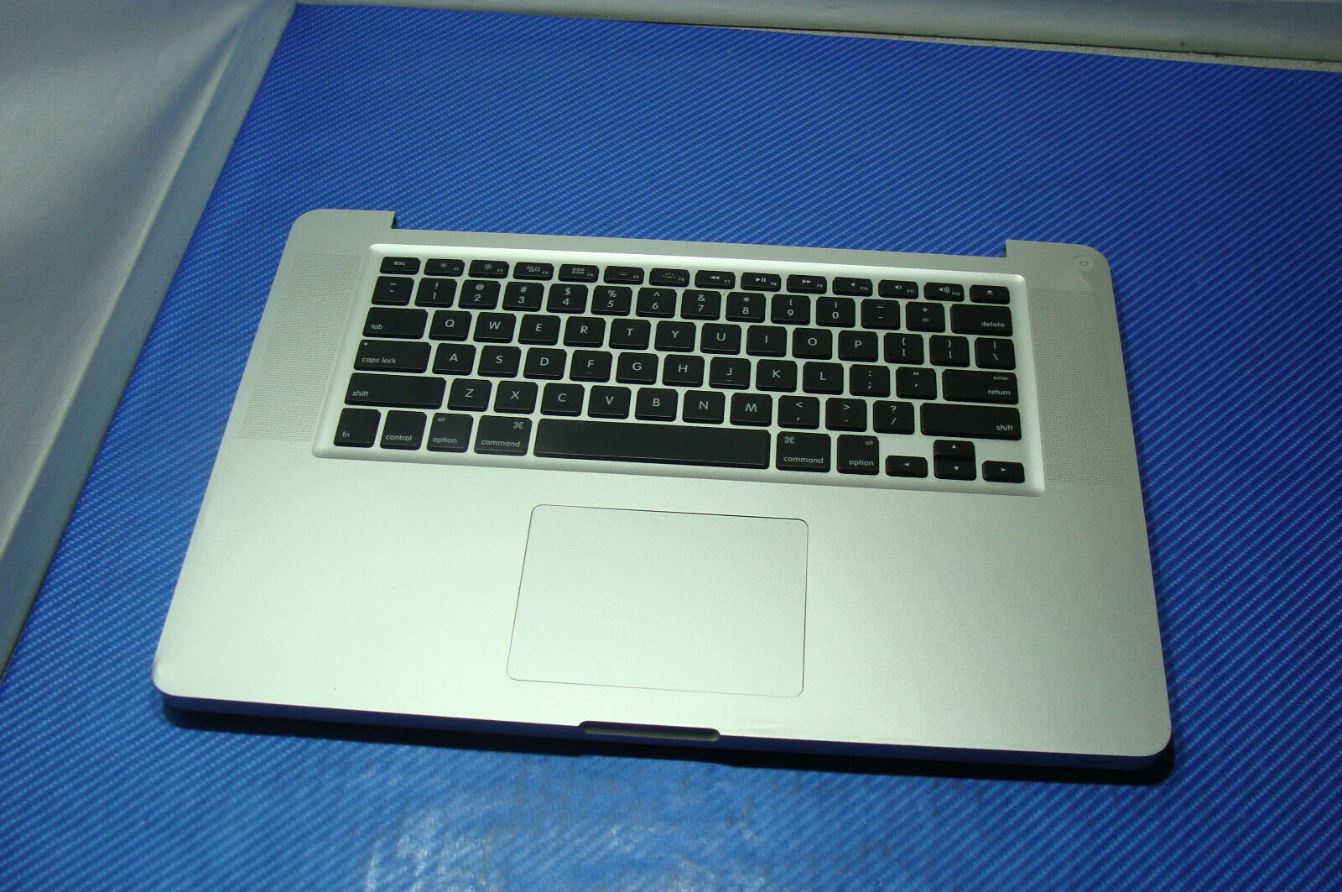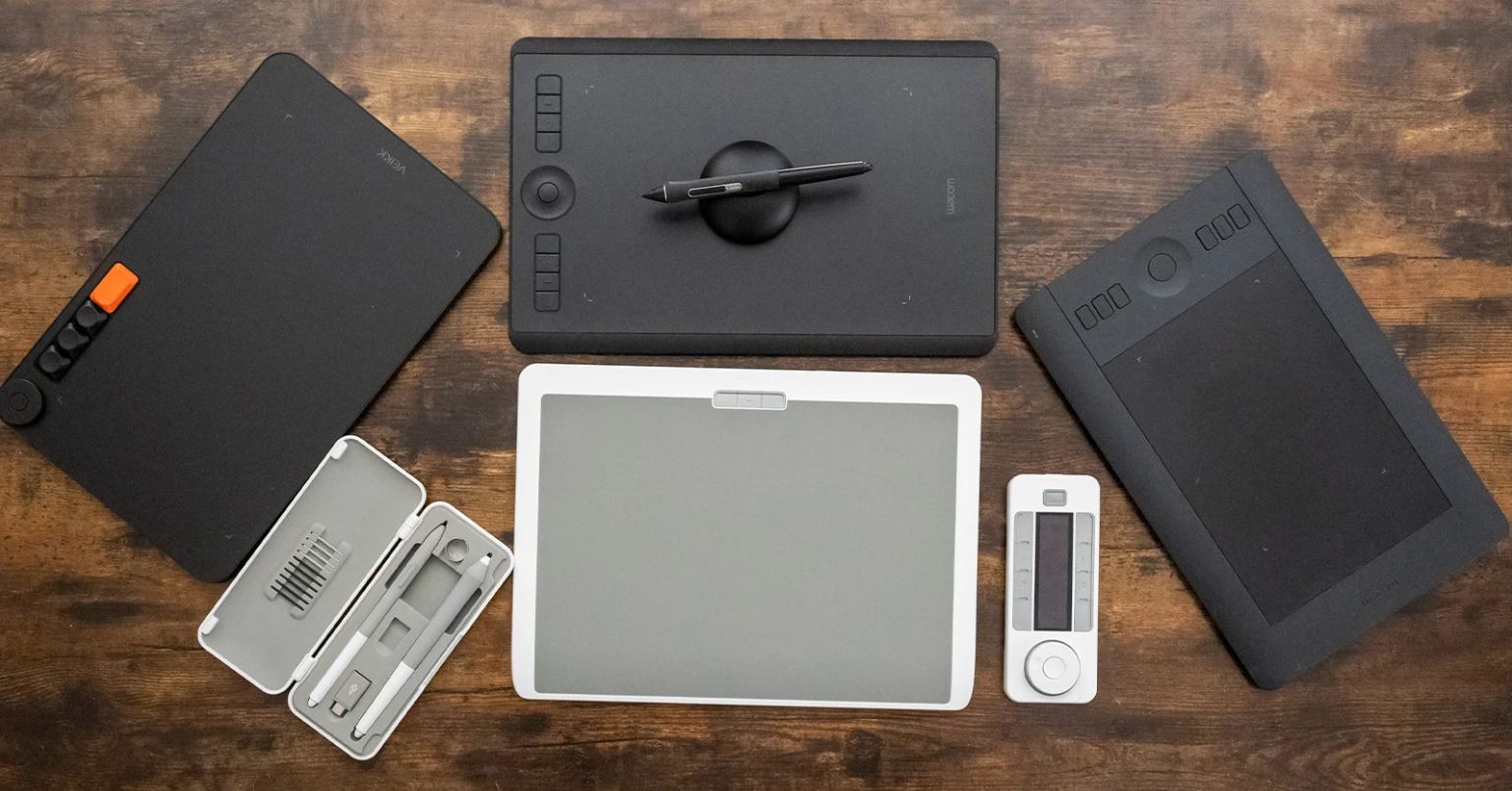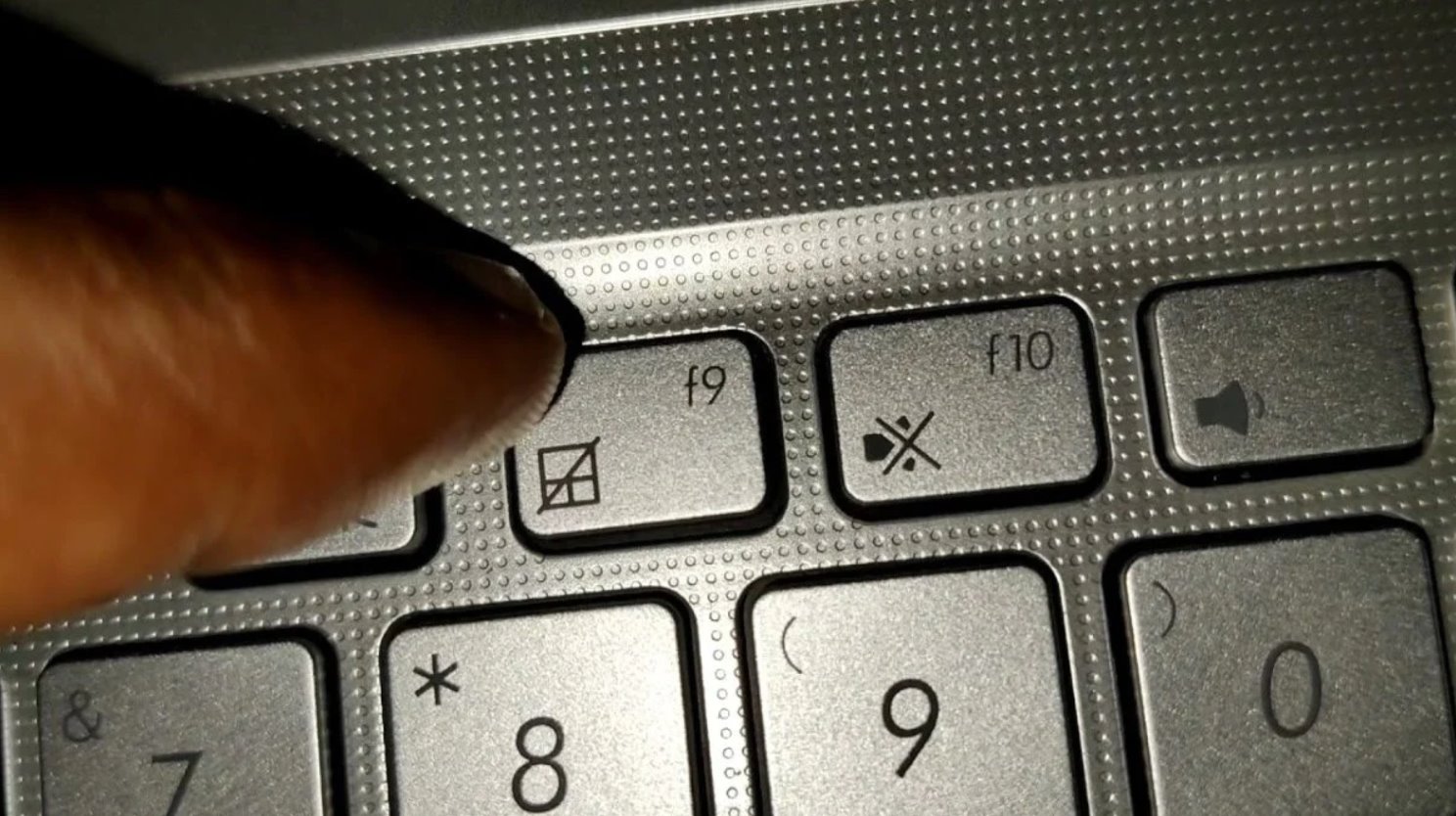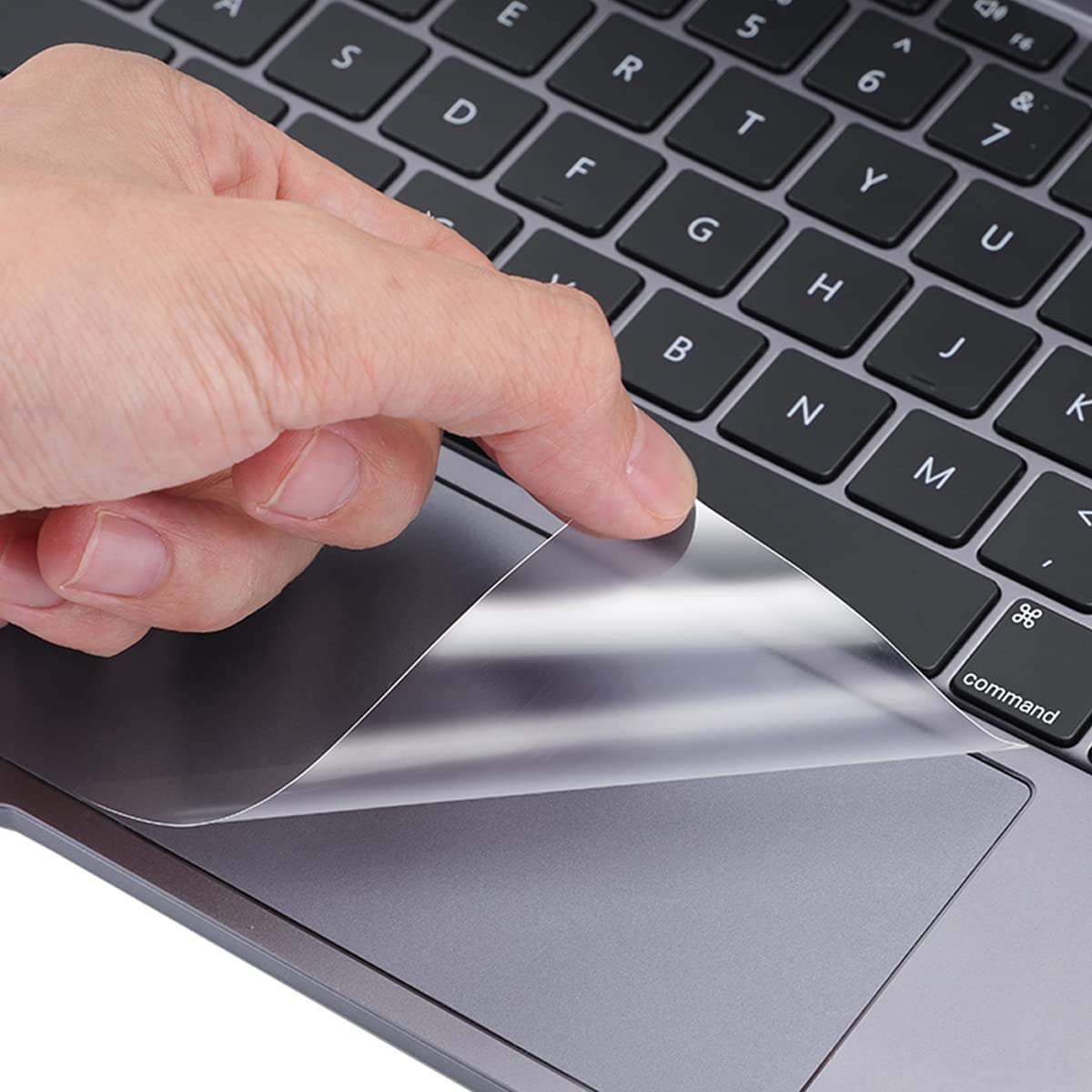Introduction
A trackpad is an essential component of a laptop that serves as an alternative to a traditional mouse. It is a touch-sensitive pad that allows users to navigate and interact with their computer by using gestures and movements with their fingertips. With the advancement in technology, trackpads have become more versatile and intuitive, providing a seamless user experience.
Trackpads have replaced the traditional mechanical mouse for several reasons. They offer greater convenience and portability as they are integrated into the laptop itself, eliminating the need for external peripherals. Additionally, trackpads provide more precise control and responsiveness in performing various tasks on a laptop.
In this article, we will explore the features, functions, and benefits of using a trackpad on a laptop. We will also discuss the different types of trackpads available and compare them with other input devices. Lastly, we will provide some tips to help you make the most of your trackpad and improve your productivity.
Definition of a Trackpad
A trackpad, also known as a touchpad, is a built-in input device found on laptops that enables users to navigate and interact with their computer without the need for an external mouse. It is a rectangular-shaped pad typically located below the keyboard.
The trackpad consists of a touch-sensitive surface that detects the user’s finger movements and translates them into actions on the screen. It allows users to control the cursor, perform various gestures, and execute commands by simply tapping, scrolling, pinching, or swiping their fingers on the surface of the trackpad.
Trackpads utilize multi-touch technology, capable of detecting multiple fingers simultaneously, enabling users to perform complex gestures. The sensitivity of the trackpad can be adjusted according to the user’s preference, allowing for precise control over the cursor’s movements.
It is essential to note that the term “trackpad” is commonly associated with Apple devices (such as MacBook and MacBook Pro), while “touchpad” is more frequently used to refer to trackpads found on Windows-based laptops. However, the functionality and features of both trackpads and touchpads are similar.
Features of a Trackpad
Trackpads on modern laptops come equipped with a variety of features that enhance the user’s interaction and control over their computer. Here are some of the key features of a trackpad:
1. Multi-Touch Gestures: Trackpads support a wide range of multi-touch gestures, allowing users to perform various actions by using multiple fingers simultaneously. These gestures include pinch-to-zoom, two-finger scrolling, three-finger swipe, and more. These gestures make navigation and interaction more intuitive and efficient.
2. Clickable Trackpad: Many trackpads feature a clickable surface, simulating the click of a traditional mouse button. By pressing down on the trackpad’s surface, users can perform left and right-click actions without the need for physical buttons.
3. Pressure Sensitivity: Some trackpads are equipped with pressure-sensitive technology, allowing users to apply different levels of pressure to trigger specific actions. This feature is particularly useful for tasks such as drawing or graphic editing, where the intensity of the touch can impact the output.
4. Palm Rejection: Advanced trackpads come with palm rejection technology, which helps prevent accidental input when resting your palm on the trackpad while typing. This feature ensures that only intentional gestures are recognized and acted upon.
5. Customizable Settings: Most operating systems provide options to customize trackpad settings according to individual preferences. Users can adjust sensitivity, scrolling speed, gesture recognition, and more to tailor the trackpad experience to their liking.
6. Integration with Accessibility Features: Trackpads often integrate with accessibility features such as touch accommodations, which enable users with motor disabilities to navigate and control their laptops more effectively.
7. Fingerprint Sensor: Some laptops incorporate a fingerprint sensor into the trackpad, providing an added layer of security for unlocking the device and accessing sensitive information.
Overall, the features of a trackpad aim to provide users with a seamless and efficient way to navigate their laptops, perform various tasks, and interact with the digital world.
How a Trackpad Works
A trackpad operates based on the principles of capacitance and touch-sensitive technology. It consists of various layers and components that work together to detect and interpret the user’s finger movements. Here is a simplified explanation of how a trackpad works:
1. Capacitive Touch Technology: The trackpad’s surface is made of a capacitive material that can store an electrical charge. When you touch the trackpad with your finger, it disrupts the electrical charge at that specific location.
2. Grid of Electrodes: Beneath the surface of the trackpad, there is a grid of tiny electrodes. These electrodes are responsible for creating an electric field across the surface of the trackpad.
3. Finger Detection: When you touch the trackpad, it detects the change in the electrical field caused by your finger’s conductivity. The electrodes determine the exact position of your finger based on the disturbance in the electric field.
4. Translation of Finger Movements: As you move your finger on the trackpad’s surface, the position of your finger is constantly monitored by the electrodes. This information is then converted into X and Y coordinates, which are used to control the movement of the cursor on the screen.
5. Gesture Recognition: Modern trackpads have advanced algorithms that can interpret different finger gestures. By analyzing the sequence and patterns of touch and movement, the trackpad can recognize gestures such as scrolling, zooming, swiping, and more.
6. Communication with the Operating System: The trackpad communicates with the laptop’s operating system, relaying the information about the detected finger movements and gestures. The operating system then translates this information into corresponding actions on the screen.
7. Driver Software: To ensure optimal performance and compatibility, trackpads often require specific driver software. These drivers allow the operating system to communicate effectively with the trackpad, enabling the customization of settings and the recognition of specific gestures.
In summary, a trackpad works by utilizing capacitive touch technology and a grid of electrodes to detect and interpret finger movements. Its ability to recognize gestures and communicate with the operating system enhances the user’s control and interaction with the laptop.
Benefits of Using a Trackpad
Using a trackpad on a laptop offers several benefits that enhance the user’s computing experience. Here are some advantages of using a trackpad:
1. Portability: The integration of a trackpad into the laptop eliminates the need for an external mouse, making it more convenient and portable. Users can easily navigate and interact with their laptops without the hassle of carrying an additional input device.
2. Precise Cursor Control: Trackpads provide precise control over the cursor’s movements, allowing users to accurately select, click, and navigate through documents, web pages, and applications. The sensitivity of the trackpad can be customized to suit individual preferences, ensuring a comfortable and efficient user experience.
3. Multi-Touch Gestures: Trackpads support a wide array of multi-touch gestures that make tasks more intuitive and efficient. Users can perform actions such as scrolling, zooming, switching between applications, and navigating through browser tabs with simple finger movements. These gestures can save time and streamline workflow.
4. Gesture Customization: Many laptops allow users to customize trackpad gestures according to their preferences. This customization enables users to tailor the trackpad’s functionality to their specific needs, enhancing productivity and user experience.
5. Ergonomic Design: Most trackpads are ergonomically designed with user comfort in mind. Users can position their hands in a relaxed and natural position, reducing strain and discomfort that can occur when using a traditional mouse for an extended period.
6. Palm Rejection: With advanced palm rejection technology, trackpads can distinguish between intentional gestures and accidental finger touches. This feature prevents unintended input when the user’s palm or other parts of the hand rest on the trackpad while typing, enhancing accuracy and minimizing errors.
7. Accessibility Features: Trackpads integrate with various accessibility features, making it easier for users with motor disabilities to navigate their laptops. These features include options for adjusting sensitivity, enabling one-handed operation, and providing alternative input methods.
Overall, using a trackpad on a laptop offers convenience, precise control, multi-touch gestures, customization options, ergonomic design, and accessibility features. It allows users to navigate, interact, and perform tasks with ease, ultimately enhancing productivity and user satisfaction.
Common Gestures and Functions on a Trackpad
A trackpad offers a range of gestures and functions that allow users to interact with their laptops in a more fluid and intuitive manner. Familiarizing yourself with these gestures can significantly enhance your productivity and efficiency. Here are some of the most common gestures and functions on a trackpad:
1. Single Tap: A single tap with one finger on the trackpad acts as a left-click, allowing you to select items, open files and folders, and execute commands.
2. Double Tap: Double-tapping with one finger is equivalent to a double-click with a mouse. It is commonly used to open applications or files and access additional functionalities like renaming files.
3. Two-Finger Scroll: By placing two fingers on the trackpad and moving them up or down, you can scroll through documents, web pages, and lists. This gesture allows for smooth and effortless navigation.
4. Pinch-to-Zoom: Pinching two fingers together or spreading them apart on the trackpad enables you to zoom in or out on photos, web pages, and other content. This gesture is particularly handy when viewing detailed images or reading small text.
5. Three-Finger Swipe: Swiping three fingers horizontally on the trackpad allows you to switch between open applications or browser tabs. This gesture provides a quick way to navigate and multitask seamlessly.
6. Three-Finger Swipe Up: Swiping three fingers upward on the trackpad reveals the multi-tasking view, displaying all open applications and allowing you to switch between them effortlessly. This feature is particularly useful for managing multiple tasks simultaneously.
7. Three-Finger Swipe Down: Swiping three fingers downward on the trackpad hides all open applications, providing a clutter-free desktop and quick access to files and folders.
8. Four-Finger Swipe: On some trackpads, swiping four fingers to the left or right allows you to switch between virtual desktops or navigate through open windows of the same application. This gesture enhances productivity by simplifying window management.
9. Tap and Drag: By tapping and holding one finger on the trackpad and then moving it, you can perform drag-and-drop operations. This gesture is useful for moving files, selecting text, and rearranging elements on the screen.
10. Right-Click: Most trackpads support right-click functionality. You can either use a two-finger click or enable a specific area on the trackpad for right-clicking. This allows you to access context menus and additional options for various actions.
These common gestures and functions on a trackpad are designed to make interacting with your laptop more efficient and natural. Mastering these gestures will enhance your navigation skills and streamline your workflow.
Different Types of Trackpads
Trackpads come in various designs and technologies, each offering unique features and functionalities. Here are some of the different types of trackpads you may encounter:
1. Standard Trackpad: The standard trackpad is the most common type found on laptops. It uses capacitive touch technology to detect finger movements and supports basic gestures like tapping, scrolling, and dragging.
2. Pressure-Sensitive Trackpad: Some trackpads have pressure-sensitive capabilities, allowing them to detect different levels of pressure applied by the user’s fingers. This feature is particularly useful for tasks that require precision, such as graphic design or drawing.
3. Clickable Trackpad: A clickable trackpad is designed to simulate the click of a traditional mouse button. The entire surface of the trackpad acts as a clickable button, eliminating the need for separate physical buttons.
4. Force Touch Trackpad: Force Touch trackpads, introduced by Apple, feature haptic feedback and force-sensitive technology. They can detect the pressure applied to the trackpad, enabling users to perform different actions based on the force applied. This trackpad can distinguish between a light tap, a deeper press, and various levels in between.
5. Multi-Touch Trackpad: Multi-touch trackpads support a wide range of touch gestures using multiple fingers. These gestures include pinch-to-zoom, two-finger scrolling, three-finger swipe, and more. They enable users to perform complex actions efficiently and improve navigation and productivity.
6. Integrated Fingerprint Sensor: Some trackpads incorporate an integrated fingerprint sensor for added security and convenience. This feature allows users to unlock their laptops or access sensitive information using their fingerprint.
7. Customizable Trackpads: Certain laptops offer trackpads with customizable settings. Users can adjust sensitivity, gesture recognition, and other parameters according to their preference, enhancing the overall trackpad experience.
8. Advanced Gesture Recognition: Trackpads with advanced gesture recognition go beyond the basic gestures. They can recognize more complex gestures, such as rotating two fingers or swiping with three fingers, offering more functionality and versatility.
9. Wireless Trackpad: Wireless trackpads are standalone devices that connect to the laptop wirelessly, providing the convenience of a trackpad without being built into the laptop. They offer flexibility and freedom of movement.
These are just a few examples of the different types of trackpads available on laptops. The choice of trackpad may vary depending on the brand, model, and intended usage of the laptop.
Comparison with Other Input Devices
The trackpad is a popular input device on laptops, but there are other options available for interacting with a computer. Let’s compare the trackpad with other commonly used input devices:
1. Mouse: The traditional mouse offers a physical interface with buttons and a scroll wheel. Compared to a trackpad, a mouse provides precise control and ergonomic support for extended use. It is ideal for tasks that require pixel-accurate movements, such as graphic design or gaming.
2. Touchscreen: Touchscreen displays have become more prevalent in laptops and all-in-one computers. They provide a direct and intuitive way to interact with the screen, eliminating the need for a separate input device. However, they may not be as precise or comfortable for tasks that require fine adjustments or prolonged use.
3. Stylus or Pen Input: Some laptops offer stylus or pen input, which provides a natural and precise way to write, draw, or annotate on the screen. Stylus input is ideal for artists, designers, and note-takers who prefer the sensation of writing on paper.
4. Trackball: A trackball is a stationary device that allows users to move the cursor by manipulating a ball with their fingers or thumb. It offers precise control and reduces the need for physical hand movement. Trackballs can be advantageous for individuals with limited desk space or mobility restrictions.
5. Keyboard Navigation: Keyboard shortcuts and navigation keys provide an alternative way to interact with a computer. While they may not offer the same level of precision as a trackpad or mouse, keyboard navigation can be efficient and convenient for certain tasks, such as text editing or navigating through menus.
6. Gestures with Motion Controllers: Motion controllers, like those used in virtual reality systems or gaming consoles, enable users to interact with the computer by tracking their hand movements in 3D space. These controllers provide a highly immersive and intuitive experience but may require specialized hardware and software support.
Each input device has its advantages and is suited for different scenarios. The trackpad offers a balance between portability, ease of use, and functionality, making it a popular choice for laptop users.
Tips for Using a Trackpad Effectively
A trackpad is a versatile tool that can greatly enhance your productivity and user experience on a laptop. Here are some tips to help you make the most of your trackpad:
1. Customize Trackpad Settings: Take advantage of the customization options available for your trackpad. Adjust the sensitivity, scroll speed, and gesture recognition to suit your preferences and working style. Experiment with different settings to find what works best for you.
2. Learn and Practice Gestures: Familiarize yourself with the various gestures supported by your trackpad and practice using them regularly. These gestures can save time and make navigation more intuitive. Refer to the laptop’s user manual or online resources to discover all the available gestures.
3. Enable Tap-to-Click: If your trackpad supports it, consider enabling tap-to-click functionality. This feature allows you to perform a left-click by lightly tapping the trackpad surface, eliminating the need to physically press the trackpad.
4. Use Two-Finger Scrolling: Take advantage of the two-finger scrolling gesture to navigate through web pages, documents, and lists. Scrolling with two fingers is more efficient than using arrow keys or the scroll bar.
5. Utilize Three-Finger Gestures: Explore the three-finger swipe gestures to switch between applications, access the multi-tasking view, or hide open windows. These gestures provide quick shortcuts for navigating and managing multiple tasks.
6. Practice Pinch-to-Zoom: Incorporate pinch-to-zoom gestures when viewing images, documents, or web content. This allows you to zoom in for a closer look or zoom out for a broader view.
7. Take Advantage of Drag-and-Drop: Use the tap-and-drag gesture to easily move, copy, or rearrange files and folders. This simplifies file management and increases productivity.
8. Keep Your Trackpad Clean: Regularly clean your trackpad surface to ensure smooth and accurate tracking. Use a soft cloth or a mild cleaning solution to remove dirt, oils, and smudges that can affect its sensitivity.
9. Practice Touch Typing: If you tend to accidentally touch the trackpad while typing, practice touch typing techniques to minimize unintended cursor movements. In some cases, you can also adjust the trackpad settings to enable palm rejection.
10. Use External Peripherals: If you require more precise control or prefer a physical input device, consider using an external mouse or stylus in conjunction with your trackpad. This allows you to switch between different input methods based on your needs.
By following these tips, you can optimize your trackpad usage and improve your overall efficiency and ease of use when working on your laptop.
Conclusion
The trackpad on a laptop serves as a versatile and convenient input device that allows users to navigate, interact, and control their computers with ease. Its touch-sensitive surface, multi-touch gestures, and customizable settings make it an essential tool for enhancing productivity and user experience.
Throughout this article, we have explored the definition and features of a trackpad, as well as how it works to detect and interpret finger movements. We have discussed the benefits of using a trackpad, such as its portability, precise cursor control, and support for multi-touch gestures.
We have also compared trackpads with other common input devices, such as mice, touchscreens, and keyboards, noting that each has its unique advantages and use cases. It is important to consider personal preferences, tasks at hand, and the specific requirements of different situations when choosing an input device.
To use a trackpad effectively, we have provided tips such as customizing settings, learning and practicing gestures, enabling tap-to-click, utilizing drag-and-drop functionality, and keeping the trackpad clean. These suggestions aim to optimize the performance and efficiency of the trackpad for users.
In conclusion, the trackpad is a valuable and intuitive tool for interacting with laptops. Its integration into the laptop itself eliminates the need for external peripherals and provides a seamless user experience. By understanding its features, practicing gestures, and maximizing customization options, users can leverage the trackpad to navigate, control, and enhance their productivity on a laptop.







